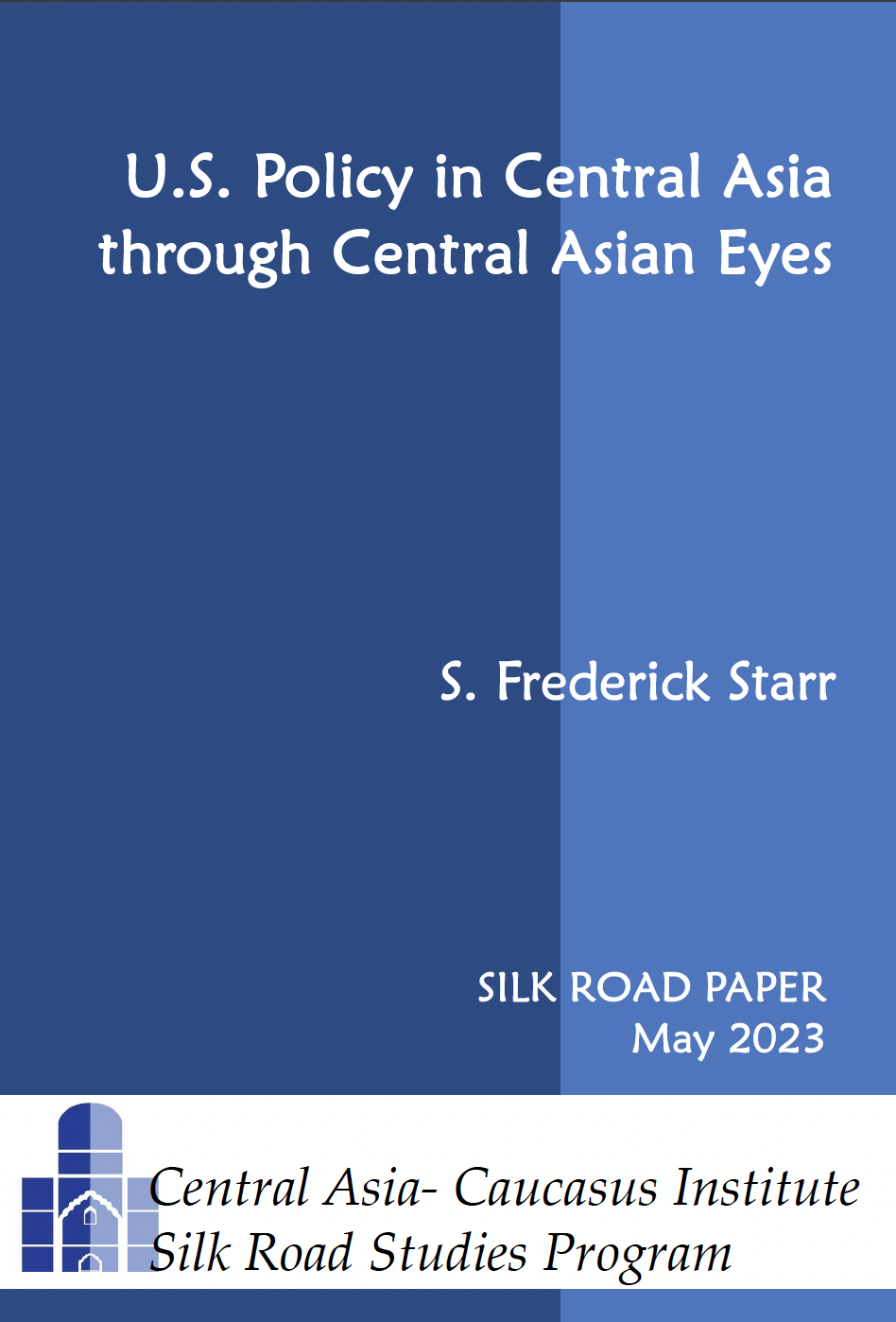Chinese-Style Modernization in Central Asia: Capacities and Constraints
By Vali Kaleji
By promoting its concept of "Chinese-style modernization" (henceforth CSM) China seeks to project an image of economic development and growth in Central Asia that is non-hegemonic, non-interventionist, and non-imposing, positioning itself as an alternative to both Russian and Western models. Given that CSM is rooted in China's authoritarian communist framework, it aligns with the secular authoritarian structures of Central Asian states and the interests of the pro-Chinese oligarchic networks within the region. However, despite its foundations in Chinese tradition, Confucianism, a distinct interpretation of Marxism, and uneven development, China's model of economic development and CSM has yet to establish itself as the dominant paradigm in Central Asia.
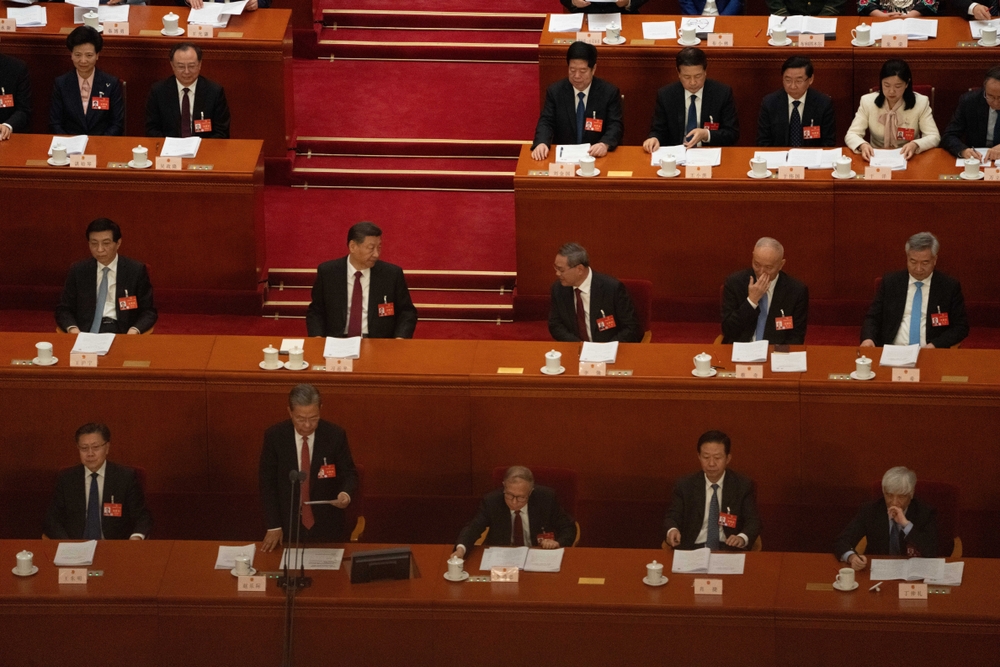
BACKGROUND: The concept of CSM, formulated in the late 1970s, has gained significant attention among Chinese leadership and researchers since the start of this decade. The emphasis on distinguishing CSM from Western and Soviet models highlights the theoretical possibility of offering a new developmental perspective to other nations. It also encourages these countries to design independent modernization strategies tailored to their unique national characteristics.
As the world’s second-largest economic power, it is crucial for China to promote its model of development and modernization within the international sphere. In this context, the development and evolution of the concept of CSM are closely linked to other key concepts proposed by China over the past few decades, such as "Peaceful Rise" and "Peaceful Development," which offer alternatives to the dominant Western development model and modernization pathways. Since September 2021, Beijing has introduced no fewer than three “Global Initiatives” focusing on development, security, and civilization. Together with the Belt and Road Initiative (BRI), these initiatives now constitute the four pillars of President Xi Jinping’s “Community for a Shared Future” framework, which China promotes as a blueprint for “world peace and stability,” “a powerful driver of global development,” and a foundation for a “New World Order.”
Following the collapse of the Soviet Union, during the transition from the Soviet development model to the Western one, the concept and model of CSM emerged as a potential alternative for Central Asian countries. While Western modernization paths emphasized liberal democratic values, transparency, a free-market economy, reduced state ownership, and the growth of private enterprises, CSM offered a different approach. It combined state control and ownership of key infrastructure with the expansion of private enterprises, notably without incorporating liberal democratic principles. The rapid and remarkable growth of China’s economy, its rising influence in global trade, and its emergence as the primary economic and trade partner of Central Asian nations—along with the One Belt, One Road initiative (the modern Silk Road) and the significant inflow of Chinese capital, labor, and companies into Central Asian markets—prompted Beijing to promote the Chinese modernization model within the region.
Given that CSM is rooted in China's authoritarian communist framework, it aligns closely with the secular authoritarian structures of Central Asian countries. This model, characterized by top-down development, differs from both Soviet and Western development approaches. Unlike the fully state-controlled development model of the Soviet era, it is not entirely government-driven, and unlike the Western model, it does not rely fully on private enterprise. Instead, it represents a hybrid system that blends state control with market-oriented mechanisms.
IMPLICATIONS: The CSM complements and strengthens China’s substantial investment and significant trade relations with Central Asia. Over the past 22 years, China has channeled approximately US$105 billion into the region through development financing, with the China Development Bank (CDB) serving as a key player in this process. By promoting CSM, Beijing appears to be aiming to stabilize and secure its investments while ensuring sustained commercial and economic influence in Central Asia.
Since the beginning of Deng Xiaoping’s leadership, economic development and growth have been central to the political legitimacy of the Chinese Communist Party, an approach that can appeal to the authoritarian leaders of Central Asia seeking to enhance their own political legitimacy. CSM aligns with the interests of the pro-Chinese oligarchic network in Central Asia, encompassing a diverse range of actors, from politicians to owners and managers of both public and private enterprises. While the Western development model, based on a bottom-up approach, emphasizes transparency, CSM, characterized by a top-down approach often associated with ambiguity, lack of transparency, and, in many cases, corruption, is particularly attractive to the region’s oligarchic networks and shadow economy. Moreover, the thousands of Central Asian students who graduate annually from Chinese universities under Chinese government scholarships—especially in fields such as economics, business, management, and finance—play a crucial role in disseminating and promoting the CSM throughout the region.
CSM also serves as a key element of China’s "soft power," its so-called "Chinese Marshall Plan," and "soft hegemonism" in Central Asia. It aims to offer a development model tailored to the cultural, national, and ethnic values of the region, complementing China’s growing economic and commercial influence. By promoting this model, China seeks to project an image of non-hegemonic, non-interventionist, and non-imposing development, positioning it as an alternative to the Russian and Western models. Additionally, the promotion of CSM plays a crucial role in China’s strategy to counter rising anti-Chinese sentiment and Sinophobia in Central Asia. In this context, a Chinese researcher suggests that CSM, as a new form of modernization, emphasizes "human modernization" as its distinctive realization. This concept reflects China’s efforts to present a soft, humane image of development and modernization.
Yet CSM in Central Asia faces significant constraints and obstacles. This model stems from a unique approach rooted in Chinese traditions, Confucian principles, and a distinct interpretation of Marxism, making it difficult to replicate effectively in other regions, including Central Asia. Even in Southeast Asian countries such as Taiwan, Singapore, Malaysia, and Thailand—nations with stronger linguistic, historical, and cultural ties to China—the Western model of development and modernization has emerged as the dominant paradigm. Moreover, CSM adopts an unbalanced approach to development, prioritizing economic growth while neglecting political development. This imbalance reduces its appeal, particularly among the middle class and educated young people in Central Asia, who tend to favor parallel development and embrace the values associated with Western liberal democracy.
Furthermore, several additional obstacles hinder the establishment of CSM as a dominant and unrivaled model in Central Asia. These include widespread anti-Chinese sentiment, along with ethnic and religious sensitivities, particularly regarding China’s policies in Xinjiang. There is also significant criticism of the performance of Chinese companies and contractors operating in Central Asia, particularly concerning issues such as labor discrimination, where Chinese workers are often given preferential treatment over local workers, and Beijing’s debt trap diplomacy in the region.
CONCLUSIONS: Although China has been the leading economic and trade partner of Central Asian countries for the past two decades, its economic development model has yet to establish itself as the dominant model in the region. Three decades after the collapse of the Soviet Union, Central Asia continues to struggle with selecting a definitive development and modernization pathway. Various aspects of the Russian, Chinese, Western, and even the Turkish model—particularly after the Justice and Development Party came to power—have been adopted to varying degrees, but no single model has prevailed. Instead, the region operates within a mixed or hybrid framework, characterized by a blend of government control and authority, free-market principles, corruption and shadow economies, private sector activity, and foreign investment.
These circumstances are the outcome of a complex interplay of factors inherent in societies transitioning from tradition to modernity in Central Asia. Key among these factors are the challenges of reconciling religion, traditions, and ethnic and national beliefs with the demands of development and modernization, as well as the region’s unique political-economic structures. Additionally, the lack of consensus among leaders and ruling elites regarding the selection of a specific development model further complicates the process. The economic, financial, and commercial interests of the oligarchic network and the shadow economy also play a significant role in shaping the region’s developmental trajectory. To address or obscure these contradictions, regional leaders often emphasize the creation and promotion of a distinct, indigenous model of development and modernization tailored to their specific national contexts.
AUTHOR’S BIO: Vali Kaleji, based in Tehran, Iran, holds a Ph.D. in Regional Studies, Central Asian and Caucasian Studies. He has published numerous analytical articles on Eurasian issues for the Eurasia Daily Monitor, the Central Asia-Caucasus Analyst, The Middle East Institute and the Valdai Club. He can be reached at This email address is being protected from spambots. You need JavaScript enabled to view it. .
The China-Kyrgyzstan-Uzbekistan Railway: China's Strategic Expansion in Russia's Backyard
By Syed Fazl-e-Haider
China is moving forward with the long-delayed 523-kilometer railway connecting Kashgar in northwest China to Kyrgyzstan and Uzbekistan as part of its Belt and Road Initiative (BRI). The China-Kyrgyzstan-Uzbekistan (CKU) railway, proposed in the 1990s, officially began construction on December 27 in Jalalabad, Kyrgyzstan. This route offers a faster, cheaper alternative to existing connections between China and Europe via Kazakhstan and Russia.
Excluding Russia from the project has drawn criticism from Moscow, which views Central Asia as its sphere of influence. However, Russia, heavily reliant on China due to Western sanctions over its 2022 Ukraine invasion, is unable to oppose the development.
The CKU railway, seen as a regional game-changer, promises to enhance trade and connectivity across Central xAsia. However, it also raises security concerns, as the route may facilitate cross-border activities of drug traffickers, terrorist groups, and militant organizations.
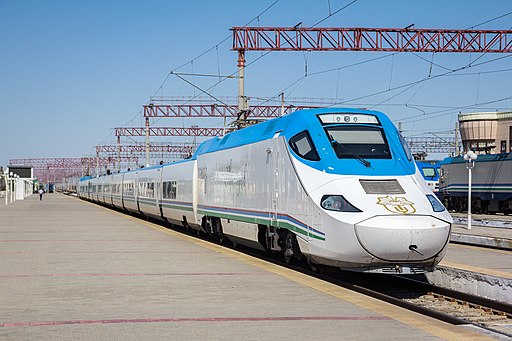
BACKGROUND: The CKU railway, first conceived in 1997, faced significant delays due to financial, political, technical, and geopolitical challenges. A major obstacle was political instability in Kyrgyzstan, which stalled progress for 15 years. The project was revitalized in 2012 following a visit to Beijing by then-Kyrgyz President Almazbek Atambayev, renewing momentum for this strategic initiative under China’s Belt and Road Initiative.
Geopolitical factors also contributed to delays in the CKU railway project. Kazakhstan and Russia opposed the new route connecting China to Europe, as they benefited significantly from the existing northern corridor via Russia, which generated substantial revenue. Concerns over losing this economic advantage fueled their resistance. Financing the mega-project was another major challenge. In 2023, reports emerged suggesting the CKU railway’s postponement for an indefinite period due to unresolved funding issues.
Technical complexities have also hindered the execution of the CKU railway project. A key issue is the incompatible railway gauges between China and Central Asian countries. While China uses a standard gauge of 1,435 mm, Kyrgyzstan and Uzbekistan rely on a broader gauge of 1,520 mm. This mismatch has posed significant logistical and engineering challenges to the project's implementation.
Another factor contributing to delays was the failure of participating countries to reach a consensus on the railway route due to conflicting interests. China and Uzbekistan favored a southern route, which offered shorter and faster transit to Europe. In contrast, Kyrgyzstan advocated for a northern route that, while longer and more expensive, would connect the north and south of Kyrgyzstan, fostering development and boosting its economy. Ultimately, under pressure from China and Uzbekistan, Kyrgyzstan conceded to the shorter and less costly southern route.
In May 2023, China and Kyrgyzstan reached an agreement to commence the CKU railway project during an official visit by the Kyrgyz President to Beijing, with the China Railway Construction Corporation completing a feasibility study the same year.
In June 2024, officials from China, Kyrgyzstan, and Uzbekistan signed a trilateral agreement to implement the project, establishing a robust legal framework for constructing the railway. The line will begin in Kashgar, Xinjiang, pass through Kyrgyzstan, and extend into Uzbekistan, with future plans for extensions to West and South Asia.
After nearly three decades of deliberation, the CKU rail corridor is now progressing. The project promises to reduce freight transit times by one week and shorten the China-Europe route by 900 kilometers, marking a significant milestone in regional connectivity.
IMPLICATIONS: Beijing's decision to advance the CKU railway project represents a strategic masterstroke, poised to deepen China's influence across Central Asia and beyond. The initiative comes at a critical juncture, as Russia remains embroiled in the Ukraine conflict and faces crippling Western sanctions, creating a vacuum in the region's geopolitical landscape.
The CKU railway will allow China to transport goods to Europe seven to eight days faster than existing land routes by providing a direct, efficient corridor to the continent. This development not only strengthens China’s connectivity but also enhances its role as a dominant trade and infrastructure player in the region.
In the future, the CKU railway could become a central hub for rail connectivity in Asia, linking Central Asia with South and West Asia. Once completed, the railway may be expanded east-west or north-south by integrating it with other countries' rail networks. Potential extensions include a route from Uzbekistan to Pakistan through Afghanistan. Additionally, Uzbekistan's existing connections with Turkmenistan and Iran could position the CKU railway as one of the shortest routes between China and Western Europe.
With the CKU corridor operational, Uzbekistan and Kyrgyzstan are set to emerge as vital transit countries for Chinese exports. Both nations stand to gain significant economic benefits from transit fees, enhancing their economic roles in regional and global trade.
As a pivotal element of China’s Belt and Road Initiative (BRI), the CKU railway represents a strategic project to enhance China's connectivity with Central Asia. This landmark railway will traverse the challenging terrain of western China and Kyrgyzstan’s highest mountains, linking the railway networks of China, Kyrgyzstan, and Uzbekistan. In its final phase, the project aims to integrate with railway systems in Europe, Turkmenistan, Iran, and Türkiye.
The CKU rail corridor is poised to boost regional trade, foster economic cooperation, and provide the landlocked nations of Kyrgyzstan and Uzbekistan with critical access to global markets. Furthermore, the project will deliver essential infrastructure to both countries, strengthening their economic resilience and regional standing.
The CKU railway project is estimated to cost US$ 8 billion, with US$ 4.7 billion allocated for constructing the Kyrgyz section. Given Kyrgyzstan’s GDP of $9 billion, this expenditure represents a significant economic burden. As a result, the financially constrained country has sought a US$ 2.35 billion loan from China to fund its portion of the project, raising concerns about Kyrgyzstan potentially falling into a Chinese debt trap.
Once completed, the CKU railway will allow China to transport goods to Europe seven to eight days faster than existing land routes. Geopolitically, this project is crucial for China, offering an alternative to the current route through Russia and reducing reliance on Moscow for trade with Europe.
On the other hand, the CKU railway raises significant security concerns as it will pass through opium-producing areas, potentially creating a new route for drug smuggling. The corridor could also facilitate the cross-border movement of terrorist and militant groups. This poses a particular threat to China’s Xinjiang province, which has been targeted by separatist and Islamic extremist groups. The railway’s potential to exacerbate regional security challenges underscores the need for robust measures to address these risks.
CONCLUSIONS: The CKU railway has the potential to be a transformative project for Central Asia, elevating the region’s significance as a transit hub between China and Europe. It marks the realization of Beijing’s decade-long ambition to expand its connectivity with Eurasian countries.
The ongoing Ukraine war and Western sanctions against Russia, following its 2022 invasion of Ukraine, have further amplified the importance of the CKU corridor. This new route provides an alternative to the Northern Corridor through Russia, currently the primary transit route between East and West, thereby diminishing Moscow’s strategic relevance in regional trade.
Geopolitically, Beijing views the timing as opportune to advance the CKU railway project in Russia's so-called backyard, leveraging the Kremlin’s preoccupation with the Ukraine war. The launch of this mega project is poised to enhance China’s influence in Central Asia, potentially shifting the balance of power between Beijing and Moscow in the region.
However, the project carries significant security risks. The presence of drug smugglers and militant groups in the region raises concerns that the CKU corridor could be exploited by these armed groups, further complicating Central Asia's already fragile security environment.
AUTHOR’S BIO: Syed Fazl-e-Haider is a Karachi-based analyst at Wikistrat. He is a freelance columnist and the author of several books. He has contributed articles and analysis to a range of publications. He is a regular contributor to Eurasia Daily Monitor of Jamestown Foundation Email, This email address is being protected from spambots. You need JavaScript enabled to view it. .
How Washington can Reconnect With Central Asia
By Stephen Blank
As a second Trump Administration takes power it is worth inquiring of its future policies towards Central Asia and the Caucasus. While neither region is likely to be a priority of U.S. policy, both offer Washington numerous opportunities to advance its interests, vis-à-vis the regional states as well as the larger actors bordering them, most prominently Russia, China, and Iran. If the incoming administration adheres to the framework that Trump’s first team propounded of this being an era framed by great power competition, it may indeed come to see the value of upgrading U.S. policy towards these countries. Across Central Asia and in the Caucasus, particularly among the Georgian population now rising against its government, and in Armenia, a stronger U.S. profile would certainly be welcome.
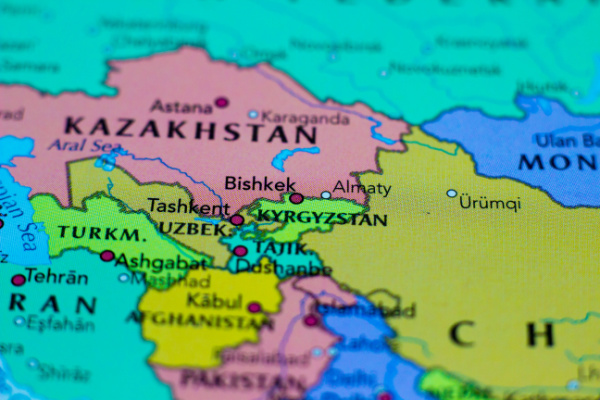
BACKGROUND: For Washington to fully benefit from enhanced relations with the governments of Central Asia and the Caucasus, it must acknowledge and adapt to the current regional realities. These regions have transformed significantly over the past generation, necessitating a rethinking of U.S. engagement strategies.
First, it is imperative to recognize that Central Asian states, as well as Russia and China, have come to terms with the Taliban’s control of Afghanistan and now consider Afghanistan an integral part of Central Asia. Despite Washington’s current reluctance to adopt a similar stance, advancing economic and political engagement with Central Asia and the Caucasus creates a foundation for future dialogues involving Afghanistan. These engagements would prepare the groundwork for meaningful regional discussions and collaborations when conditions become favorable.
Second, Azerbaijan is rapidly emerging as a key player in Central Asia. President Aliyev is frequently invited to and actively participates in regional presidential summits and Azerbaijan takes full part in significant regional economic, trade, and transportation initiatives. These projects, either in progress or under serious consideration, underscore Azerbaijan’s importance in shaping the region’s geopolitical and economic landscape. Consequently, any effective U.S. policy towards the Caucasus or Central Asia must account for these evolving regional dynamics. Recognizing and leveraging the interconnectedness between these regions will allow the U.S. to engage more effectively and with greater agility in advancing its strategic interests.
U.S. policymakers must also rethink both regions in a broader context. Central Asia and the Caucasus have established lasting inter-regional connections and ties to major global actors, including Turkey, Iran, India, South Korea, and Japan, alongside Russia and China. On economic grounds alone, Washington should increase its presence through trade, investment, environmental initiatives, and security cooperation, especially as the European Bank for Reconstruction and Development forecasts robust growth for these states. Wider U.S. engagement is needed in contrast to its neglect for the region during the Afghanistan war—when U.S. policy was narrowly focused—and subsequent disengagement after Afghanistan fell to the Taliban.
Continued U.S. and Western inattention gives Moscow and Beijing opportunities to solidify hegemonic influence, despite local governments’ explicit preference for multivector foreign policies. While the Biden Administration accepted Kazakhstan’s 5+1 presidential summit, this event has not become a recurring engagement, nor have there been significant high-level visits. Initiatives like the Economic Resilience in Central Asia (ERICEN) program are underfunded and lack alignment with an overarching strategy. This pattern of inadequate resources and strategic disconnect has long characterized U.S. initiatives in the region.
Similarly, strategy documents, such as the Trump Administration’s Central Asia Strategy to 2025, have achieved little, reflecting a lack of both intellectual and institutional commitment to the strategic importance of these regions. This is further evidenced by the absence of a strong U.S. response to Russian interference in Georgia, minimal involvement in the Armenia-Azerbaijan peace process, and the overall lack of a comprehensive strategy for Central Asia. Such bipartisan neglect highlights the critical need for a reformed and proactive approach to U.S. policy in the region.
IMPLICATIONS: To reverse this record of failure, the new administration must rethink its approach to these regions, recognizing their growing linkages and the potential of regional and international cooperation. Such collaboration will strengthen these states’ independence from Beijing and Moscow, aligning with vital U.S. interests. However, this objective requires large-scale institutional reform.
The State Department, Pentagon, and the National Security Council should establish a dedicated structure for Caucasus and Central Asian affairs. At the State Department, this would involve appointing an Assistant Secretary of State to oversee this portfolio, to whom the corresponding country desks report directly. In turn, he or she can report directly to the Under Secretary, Secretary of State, their opposite numbers at the Pentagon, and the White House at the National Security Council. Such a structure would elevate these regions’ importance in policymaking and provide the president with a more transparent and effective process for addressing issues in Central Asia and the Caucasus.
This reorganization would enable an integrated “whole-of-state” approach, ensuring that that U.S. policies align with its strategic interests and that regional voices are heard. It also allows the U.S. government to conduct policies towards these areas based on its interests rather than on the values of junior bureaucrats as in the State Department’s Bureau of Labor and Democracy. Its members previously boasted that they were going to impose democracy on Central Asian states and achieved merely an ignominious failure. They failed because they refused to take into account that every one of these governments has alternatives to Washington and factions within them who lean towards Moscow and Beijing. Therefore, in the absence of sustained U.S. engagement, all that these lectures achieved was increased anti-American resentment and a turn to other powers who took these states as they are. This outcome is visible in U.S. relations with Azerbaijan, which has many other patrons and several pro-Russian figures in its government. Baku spurned Congressional and Administration demands for democratization and subsequently moved closer to Russian policy. Undoubtedly, they saw these demands as moves initiated by this bureau and the Armenian lobby who influenced Congress in the absence of any coherent U.S. strategy.
Structural and intellectual reorganization will allow Washington to engage strategically and consistently with regional governments. By connecting democratization efforts with significant economic, political, and defense projects, these governments will find it harder to forgo the benefits of cooperation. Additionally, this structure minimizes the
influence of single-interest Congressional lobbies by emphasizing comprehensive and strategic policies. As Central Asia and the Caucasus gain prominence, increased administrative capability will enable better collaboration with Congress to shape balanced and forward-looking strategies. A proactive, strategic approach will not only enhance U.S. influence but also support the independence and development of Central Asia and the Caucasus. Addressing the importance of these regions in U.S. policymaking is critical to securing long-term stability and countering hegemonic ambitions by other powers.
CONCLUSIONS: The opportunities of the future and lessons from the past are unmistakable. Previous U.S. policies failed for reasons detailed in academic and professional literature. However, the Trump administration has a chance to respond to the region’s desire for enhanced U.S. economic, political, and military cooperation. Possibly excepting the pro-Moscow Georgian government, every state in the region seeks greater U.S. engagement, albeit on their terms.
This desire signifies a positive development that Washington should support by implementing the structural and policy changes outlined here. These adjustments would bolster the independence of Central Asia and the Caucasus and facilitate their cooperation with international institutions to spur regional development. This progress would empower these states to shape their futures independently, and not according to the wishes of Moscow or Beijing.
Failure to seize these opportunities and continuing inaction will leave these regions vulnerable to becoming backward, conflict-ridden dependents of Russia and China. The new generation, more aligned with Western values, may lose its chance for a brighter future. Rather than becoming stable regions fostering global cooperation, Central Asia and the Caucasus risk devolving into conflict zones where international rivalries escalate.
The U.S. must act decisively to prevent such an outcome. By prioritizing these regions and adopting a proactive strategy, Washington can mitigate great power competition and avert prolonged instability across Eurasia. The stakes are too high to ignore the transformative potential of effective engagement in Central Asia and the Caucasus.
AUTHOR’S BIO: Stephen Blank is a Senior Fellow with the Foreign Policy Research Institute, www.fpri.org.
Security Concerns Impede China-Pakistan Relations
By Ghulam Ali
Chinese Ambassador to Pakistan Jiang Zaidong recently criticized the repeated attacks on Chinese nationals in Pakistan, calling them “unacceptable” and citing security as the biggest challenge to the China-Pakistan Economic Corridor (CPEC). His comments followed two fatal incidents within six months, which claimed seven Chinese lives. Pakistan’s Foreign Office, instead of addressing the concerns, dismissed the remarks as “perplexing,” revealing underlying tensions in the bilateral relationship. Despite China’s role as Pakistan’s key economic partner, security lapses and strained diplomacy are testing the limits of their traditionally strong ties, highlighting deeper challenges to the CPEC and broader cooperation. These tensions point to a more complex dynamic in bilateral relations, revealing that mutual dependency alone may not be sufficient to sustain smooth cooperation amidst mounting challenges.
BACKGROUND: The diplomatic row between China and Pakistan intensified during a seminar in Islamabad on October 30, when Chinese Ambassador Jiang Zaidong openly rebutted remarks by Pakistan’s Deputy Prime Minister and Foreign Minister Ishaq Dar. Dar claimed that China prioritized security in its overseas investments but made Pakistan an exception due to its friendship. The ambassador firmly countered, stating that President Xi Jinping consistently emphasizes the importance of ensuring the safety of Chinese personnel, institutions, and projects in Pakistan, reiterating that security remains China’s top concern and a major constraint to the CPEC. This marked the first public expression of such sentiments by China and an equally unprecedented response from Pakistan's Foreign Office, which described the remarks as “perplexing” and “surprising.” Pakistan's English-language media reflected the gravity of the situation, with Dawn describing the exchange as rare and The Nation advising restraint from the Foreign Office. Further complicating matters, Pakistan canceled President Asif Ali Zardari’s planned visit to China on November 2, citing a dubious pretext of a foot injury, signaling deeper strains in the relationship amid growing concerns over security and diplomatic discord. This is not the first time China has urged Pakistan to ensure the security of its nationals. In several meetings with Pakistani leaders, China has consistently emphasized the importance of safeguarding Chinese citizens and interests in Pakistan. During his meeting with Pakistani Prime Minister Shahbaz Sharif in June 2024, Chinese President Xi Jinping reiterated the need for Pakistan to create a safe and stable environment, stressing the protection of Chinese nationals, projects, and institutions. In line with this, Beijing also sent Liu Jianchao, Minister of the International Department of the CPC Central Committee, to Islamabad, where he echoed similar concerns regarding security during discussions with Pakistan’s political leaders. China has faced numerous attacks on its citizens in Pakistan, with over 21 Chinese nationals killed since 2017. The Balochistan Liberation Army, a separatist group seeking independence for the underdeveloped Balochistan province, which hosts the strategic Gwadar Port, is behind many of these attacks. The Balochi population has long expressed grievances over marginalization and resource extraction without benefiting from the region’s wealth, fueling insurgent movements. Currently, Balochistan is experiencing its fifth wave of insurgency. Another key source of attacks on Chinese nationals is the Tehrik-i-Taliban Pakistan (TTP), a militant group primarily based in Khyber Pakhtunkhwa and along the Pakistan-Afghanistan border. While the TTP has denied responsibility, Pakistani authorities have attributed the March 2024 suicide bombing that killed five Chinese engineers to the group. Allegations suggest that the TTP may be collaborating with Uyghur separatists, given their shared religious ideology, further complicating the security landscape for Chinese nationals in Pakistan.
IMPLICATIONS: The Chinese ambassador’s public expression of frustration and his direct reprimand of Pakistani officials highlighted China’s increasing impatience with Pakistan’s handling of security for Chinese nationals. By emphasizing the gravity of the situation and warning against future incidents, the ambassador signaled that China would no longer shy away from bluntly addressing its concerns. This shift in tone underscores the growing tension in the bilateral relationship, with the potential for global attention if the situation deteriorates further. The security situation in Pakistan will be pivotal in determining China’s future investment decisions. If the security environment remains unstable, China may choose to complete ongoing projects but refrain from launching new ones. This was evident during Chinese Premier Li Qiang's mid-October visit to Pakistan for the SCO conference, where he did not explicitly endorse the second phase of the CPEC or any new initiatives. This lack of commitment signals that security concerns could heavily influence China’s willingness to deepen its involvement in Pakistan moving forward. China and Pakistan had already planned to review their counterterrorism cooperation, and recent developments are likely to expedite this process through three key trends. First, China may increase its security support by providing bomb-proof vehicles for the safe transport of Chinese engineers, offering specialized security training to Pakistani personnel, and expanding intelligence sharing and consultation between the two countries. Second, the idea of involving Chinese private security companies (PSCs) or establishing joint security arrangements with Pakistani counterparts could gain traction. China has expressed interest in deploying PSCs, especially in conflict zones worldwide, to safeguard its growing investments. However, the deployment of PSCs to Pakistan faces both legal and practical obstacles. Pakistani law prohibits foreign security companies from operating within its borders. Even if this hurdle is overcome, the concept is likely to face challenges due to the country’s security realities. The Pakistani military and intelligence agencies, despite having the necessary resources and capabilities, have struggled to protect Chinese nationals. Given this, private companies, with far fewer resources, may not be effective in improving security. Additionally, bringing in foreign security personnel, whether from China’s armed forces or private firms, could expose them to the same risks from terrorist groups that have targeted Chinese nationals in the past. Third, the worsening security situation in Pakistan could provide the military with a pretext for launching another large-scale military operation, something it has long advocated. In June 2024, the Pakistani government approved the counter-terrorism operation Azm-e-Istehkam (Resolve for Stability), but its implementation was delayed due to opposition from political parties and the Pashtun Tahafuz Movement (PTM), which advocates for the rights of Pashtuns. However, conducting a military operation during a period of economic difficulties, political polarization, and significant opposition would reduce its likelihood of success. Additionally, such an operation would come with substantial economic costs and the risk of collateral damage, particularly in already unstable regions, further complicating its execution and effectiveness.
CONCLUSIONS: Although a seemingly minor incident, Chinese Ambassador Jiang Zaidong's remarks have exposed long-standing issues between China and Pakistan, revealing underlying challenges in their relationship. These comments have sparked debate, both within Pakistan and internationally, regarding the durability of their "all-weather" friendship. If one factor has most damaged the Sino-Pakistani partnership, it is terrorism. Likewise, if there is one issue that will significantly determine the future of this relationship, it is the ongoing challenge of terrorism and its impact on security for both nations.
AUTHOR’S BIO: Dr. Ghulam Ali is the Deputy Director of the Hong Kong Research Center for Asian Studies (www.rcas.top). He received his PhD from Monash University in Australia and completed a postdoc at Peking University in Beijing. He has authored or edited four books and published articles in academic journals and media outlets.
The Wakhan Corridor: China's Inroad to Afghanistan
By Aigerim Turgunbaeva and Fayazuddin Ghiasi
On January 2, 2024, Mullah Baradar, Deputy Prime Minister for Economic Affairs in the Taliban administration, announced that construction of the Wakhan Corridor, a strategic route connecting Afghanistan to China, remains underway. Baradar highlighted that the new road through Wakhan in Badakhshan Province is expected to establish a direct trade link between Afghanistan and China, thereby greatly enhancing bilateral trade opportunities. Taliban officials have underscored the geopolitical significance of the corridor, as it is positioned at a pivotal intersection of regional interests, potentially influencing broader dynamics in Central and South Asia.
BACKGROUND: Mawlawi Ayub Khalid, the Taliban-appointed governor of Afghanistan’s Badakhshan province, reported to Al Jazeera that, following five months of continuous work, they have constructed a road physically connecting Afghanistan and China. This milestone is anticipated to catalyze economic development across the region. The section of the road under construction spans 49 kilometers, with nearly 40 percent of the work completed to date. In the coming years, this road is projected to extend into China’s Xinjiang region, further solidifying the direct trade link between the two nations. The Wakhan Corridor, an ancient segment of the Silk Road connecting Afghanistan and China, first appeared on maps in 1895 as a buffer zone strategically positioned between the Russian Empire and British India, emphasizing its enduring geopolitical significance. Although the Sino-Afghan border was formally delineated in 1963, no border checkpoints were established, despite the two countries sharing a direct border. External factors, including the prolonged presence of U.S. and NATO forces in Afghanistan and concerns over the East Turkestan Islamic Movement (ETIM) affecting China's security, had historically hindered the development of closer ties between Beijing and Kabul. China's strategic engagement with the Taliban underscores its long-term interests in Afghanistan’s remote Badakhshan province, specifically the Wakhan Corridor. This engagement reflects China’s cautious preparation for a regional realignment that began well before the U.S. withdrawal, as China employed diplomacy and development initiatives to strengthen ties with Afghanistan. Since 2012, China’s military and strategic involvement in the Wakhan region has gradually expanded, leveraging its location at the nexus of Afghanistan, Tajikistan, China, and Pakistan. In 2017, China pledged over US$ 90 million to support infrastructure projects in northeastern Afghanistan, including fiber optic connections and a segment of road through Wakhan. However, the presence of U.S. forces, delays in funding, and various political obstacles impeded progress on these initiatives. Despite previous setbacks, China’s vision for regional integration has remained steadfast. In 2021, the Taliban’s Ministry of Public Works announced plans for a road linking Afghanistan's Ishkashim district to China’s Xinjiang province through the Wakhan Corridor, part of a broader regional development strategy. Since the Taliban assumed control, China’s investments in Afghanistan have significantly increased, with substantial funding directed toward regional infrastructure projects. The long-anticipated construction of this critical corridor—expected to serve as a major trade and transit route between Afghanistan and China—has now officially commenced, signaling a renewed commitment to connectivity and economic collaboration between the two nations.
IMPLICATIONS: The Wakhan Corridor is emerging as a pivotal element in Afghanistan’s geopolitical landscape, with China and Pakistan actively involved in its development. Former Afghan Information Minister Mohammad Karim Khuram has highlighted that Pakistan had previously sought to utilize the corridor to establish strategic connections with Central Asia and China; however, these efforts were met with resistance under President Karzai’s administration. In early 2022, the situation evolved when the Pakistani military, in coordination with Chinese forces, crossed into the Afghan side of the corridor to adjust border demarcations originally established under the 1895 Russo-British agreements. This move provoked widespread backlash on Afghan social media, prompting the Taliban to deploy forces to reassert the historic boundary. Recently, the Taliban, with significant Chinese support, has committed to advancing the infrastructure within the Wakhan Corridor, underscoring China’s clear interest in integrating Afghanistan into its Belt and Road Initiative (BRI). High-level visits by Taliban officials and the Chinese ambassador to the corridor in August 2024 further emphasize the project’s strategic importance. Local communities believe that the corridor could play a crucial role in fostering economic stability, facilitating streamlined exports between Afghanistan and China, and promoting the development of surrounding areas. The Wakhan Corridor project illustrates China’s strategic intent to dominate Afghanistan’s economy, positioning itself as a key trade partner while outmaneuvering competitors such as Uzbekistan, Iran, the UAE, and India. By establishing a direct trade route, China seeks to circumvent more expensive, indirect pathways through Pakistan or Uzbekistan, thereby consolidating its economic influence in Afghanistan. Additionally, the project aligns with Pakistan’s broader goal of enhancing its trade connections with Central Asia, sidelining India’s influence in the region. From a security perspective, the Wakhan Corridor provides China with a buffer zone to secure its sensitive Xinjiang region. Concerns regarding groups like ETIM and the Islamic State Khorasan Province (ISKP) have driven China to create a “security belt” along the corridor, supported by two dedicated security units and coordinated patrols with the Taliban to reinforce local stability. China’s growing investment in Afghan infrastructure projects, including those in resource-rich areas such as the Amu Darya oil fields, further underscores its strategy of embedding economic initiatives that enhance regional security while serving its broader geopolitical interests. Although China and the Taliban have forged a cooperative relationship, a level of mutual distrust endures, adding complexity to their interactions. The Wakhan Corridor project thus functions as both a diplomatic bridge and a strategic instrument for China, enabling it to manage regional threats while embedding itself economically and geopolitically in Afghanistan’s future. The Wakhan Corridor holds substantial strategic potential, positioning itself as a critical link that could connect China to Iran and onward across Central and South Asia through Afghanistan. This vision aligns with Iran’s aspirations for regional connectivity but faces opposition from India, whose border tensions with Pakistan in the Azad Kashmir region complicate cooperation on such initiatives. Functioning as a contemporary extension of the ancient Silk Road, the corridor is poised to have far-reaching economic and security ramifications, likely reshaping the regional balance of power. Its development could redefine trade routes, potentially offering more efficient access between East and West, while also bolstering China's influence across a corridor that traverses key geopolitical frontiers. As both a trade artery and a security buffer, the Wakhan Corridor embodies the intersection of historic ambitions and modern strategic interests, with the capacity to influence the economic and political landscape of Central and South Asia for years to come.
CONCLUSIONS: China’s present approach to Afghanistan reveals a meticulously crafted strategy that emerged following the U.S.-led withdrawal in 2021. With the exit of Western forces, Chinese policymakers identified a strategic window to establish direct engagement with the Taliban. This shift allowed China to reinvigorate major projects, including the Amu Darya oil fields, as well as gold mining operations in Takhar and Badakhshan, while reconsidering the long-stalled Mes Aynak copper mine project, originally awarded to China in 2010. However, China’s deepening involvement in the Wakhan Corridor signals a focus that extends beyond economic objectives, highlighting a pronounced interest in regional security and geopolitical stability. The Wakhan Corridor not only represents an opportunity to secure valuable resources but also functions as a strategic zone for monitoring and mitigating regional threats. Through this multifaceted engagement, China is navigating a balance between bolstering Afghanistan’s infrastructure and securing its own influence, underscoring the corridor's importance within a broader vision of Central and South Asian stability and security. China’s presence in the Wakhan Corridor serves as a calculated measure to counter threats from extremist groups, particularly ETIM, which poses potential risks to the stability of its border regions, especially Xinjiang. This approach aligns seamlessly with China’s broader strategy to reinforce stability across Central Asia—a region where China has made substantial investments and is consolidating its role as the dominant economic force. For the U.S., China’s expanding footprint along the Wakhan Corridor is a growing point of concern, as it threatens to reduce U.S. influence within Eurasia, particularly in areas related to counterterrorism and regional diplomatic leverage. Washington remains closely attuned to China’s evolving role in Afghanistan, apprehensive that deepening Beijing-Kabul relations could disrupt U.S. strategic interests in the region. This shifting dynamic underscores the broader geopolitical contest over influence in Central and South Asia, where China’s calculated moves may challenge the United States' longstanding objectives in both regional security and diplomatic outreach. The unique geography of the Wakhan Corridor offers China a strategic opportunity to establish an efficient trade and energy route into Central Asia, potentially shortening pipeline distances and bolstering its energy security. If successfully developed, this initiative would solidify China’s position as both a dominant economic and military power in the region. The corridor serves as a critical junction where China’s economic ambitions converge with its security priorities, creating a dual-purpose pathway that addresses both its energy needs and regional stability concerns. As a result, the Wakhan Corridor could serve as the foundation for a robust Chinese presence that is likely to influence the regional order for the foreseeable future, shaping economic relations and security dynamics across Central and South Asia.
AUTHORS’ BIOS:
Aigerim Turgunbaeva is an independent journalist focusing on Central Asia. Aigerim writes about press freedom, human rights, and politics in the former Soviet space, and delves into China’s interests in the region for publications like The Diplomat, The Guardian, Reuters, Eurasianet. She is a 2024 CAMCA Fellow.
Dr. Fayazuddin Ghiasi is a Rumsfeld Fellow and senior Research Fellow on Afghanistan and Central Asia at the Centre for Afghanistan and Regional Studies. Ghiasi writes about regional geo-economics and geo-strategy, connectivity and politics in various national and international news outlets and journals.



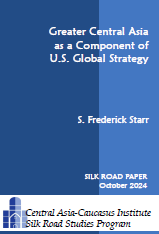 Silk Road Paper S. Frederick Starr,
Silk Road Paper S. Frederick Starr, 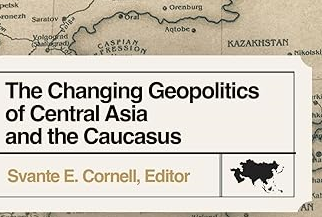 Book Svante E. Cornell, ed., "
Book Svante E. Cornell, ed., "